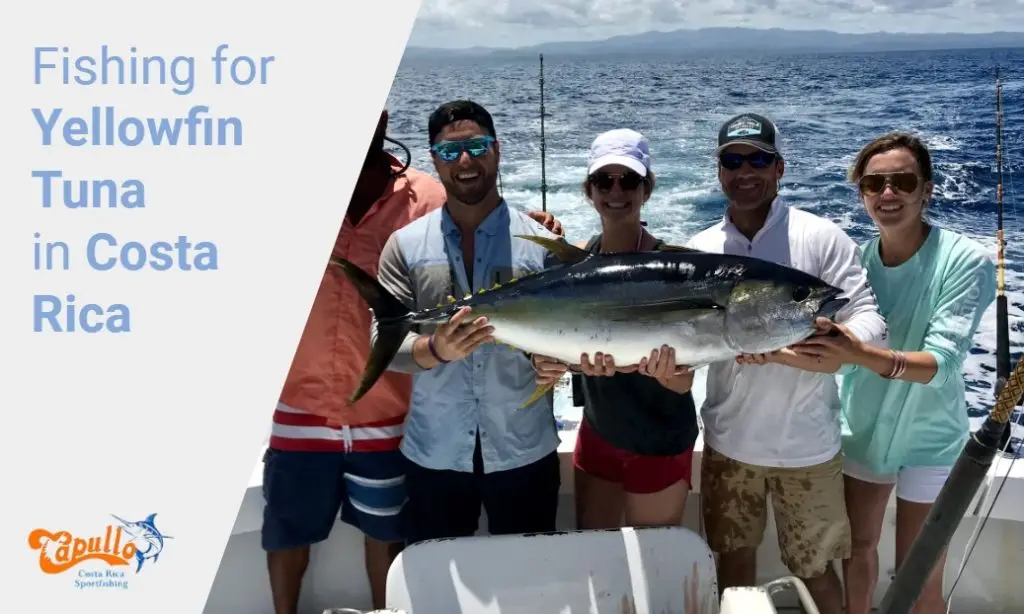
Yellowfin Tuna: Catching and Understanding Yellowfin Tuna Fishing in Costa Rica 2023
The Yellowfin Tuna is renowned in Costa Rica for its large size and vibrant yellow fins. It’s a fast and elusive fish that provides an exhilarating catch for anglers of all experiences.
If you are looking to catch Yellowfin Tuna in Costa Rica, but don’t want to worry about choosing the perfect location or getting the right equipment, book a charter trip with Capullo sportfishing charter, located in Guanacaste Province, Costa Rica.
For more information call: +1 506-8569-3516
From US or Canada you have to dial +11 506 8569 3516
Table of Contents
What is a Yellowfin Tuna fish?
The Yellowfin tuna, often marketed as ahi, from the Hawaiian ʻahi, is a species of tuna found in pelagic waters of tropical and subtropical oceans worldwide. The yellowfin tuna is a member of the Scombridae family and gets its name from the vibrant yellow fins and small spikes along the top and bottom of it’s tail..
The species’ name is albacares, which means “white meat”. In English, the albacore is a different species, but in French, yellowfin is officially designated as albacore. In Spanish, it’s known as “atún de aleta amarilla.”
What does a Yellowfin Tuna fish look like?
The most distinctive characteristic of the yellowfin tuna is its bright yellow second dorsal fin, anal fin, and the finlets between them leading to the tail. Yellowfin Tuna have a very dark metallic blue body that changes to silver on the belly, with a notable 20 vertical lines on its belly.
The second dorsal and anal fins can be very long in mature specimens, almost reaching the tail, giving them the appearance of sickles or scimitars. The pectoral fins are longer than those of the related bluefin tuna but not as long as the albacore’s.
What is the size of a Yellowfin Tuna fish?
Yellowfin Tunas have a total length between 43”-83” (110-210 cm), body height of 10.5”-20.5” (26.7-52 cm). Their overall weight typically ranges from 300-400 lb (136-181 kg).
Yellowfin tuna is among the larger tuna species, but, they are smaller than the Atlantic and Pacific bluefin tunas, which can reach over 450 kg (990 lb). Reported sizes have ranged as high as 2.4 m (7 ft 10 in) in length and 200 kg (440 lb) in weight.
The all-tackle IGFA record stands at 193.68 kg (427.0 lb) for a yellowfin caught in 2012 off Cabo San Lucas, Mexico.
Where can Yellowfin Tuna fish be caught?
Yellowfin tuna can be caught in tropical and subtropical oceans globally, including areas like the Gulf of Mexico, U.S. Pacific Islands, and off southern California. Popular fishing spots in the U.S. include Texas coasts, Louisiana’s Venice, Alabama’s offshore, Florida’s panhandle and Atlantic coast, South Carolina’s Charleston, New Jersey’s Cape May, and San Diego in California. They are also found around Oahu, Hawaii, and New England
These fish typically inhabit waters with temperatures between 59° and 88° F. While they predominantly favor the epipelagic zone, staying within the upper 330 feet of the ocean above the thermocline, they have the capability to dive to impressive depths of up to 3800 feet.
Yellowfin tuna migrate in schools based on water temperature and food sources. They often travel alongside similarly-sized creatures like manta rays, dolphins, and whale sharks, and are frequently found beneath flotsam or moving vessels.
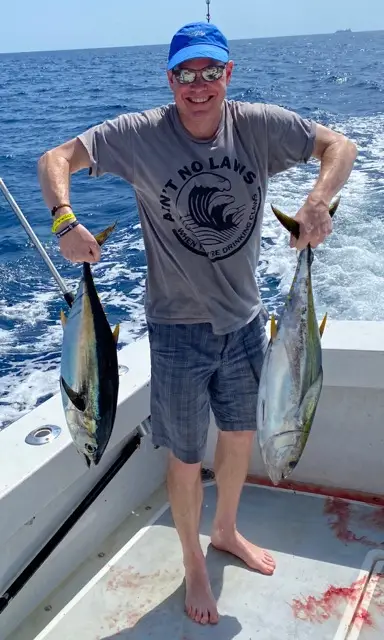
What are the best places to catch Yellowfin Tuna fish in Costa Rica?
The best places to catch Yellowfin Tuna in Costa Rica are Quepos, Los Sueños, Tamarindo in Guanacaste, Drake Bay, and Puerto Jimenez. Yellowfin tuna are found throughout the Pacific coast and also on the Caribbean coast of Costa Rica. Yellowfin Tuna sometimes come closer to shore, but as a highly migratory species, they typically prefer deep, oceanic waters for food. So, while they can be caught closer to shore in certain areas, deep-sea fishing is generally more common for this species.
Do you need a boat to catch Yellowfin Tuna fish in Costa Rica?
Given the habitat of the yellowfin tuna in deep offshore waters, a boat would be necessary to reach their locations. For the optimal fishing experience in Costa Rica, consider booking a Yellowfin fishing charter trip, like those offered by charter companies like Capullo Sports Fishing Charters. On board our fishing charters, you’ll have a higher chance of catching a Yellowfin Tuna with specialized boats, premium fishing gear, live bait, expert captains, and professional crews ensuring an unforgettable experience.
What is the best time to catch Yellowfin Tuna in Costa Rica?
The best time to catch Yellowfin Tuna in Costa Rica is during the “green season,” which spans from May to October. During these months, especially between June and September, the chances of catching yellowfin are highest. For optimal results, it’s recommended to fish between dusk and dawn when the water temperature is ideally between 68-76 degrees.
What types of Tuna fish can be caught in Costa Rica?
Other Tuna fish species that can be caught in Costa Rica are the Big-eye tuna and Skipjack Tuna.
How to catch a Yellowfin Tuna fish?
Catching a Yellowfin Tuna requires a combination of the right location, equipment, and techniques.
- Location and Timing: Yellowfin Tuna are found in pelagic waters, which are the open water and upper layers of the ocean. They are known to frequent areas like the Pacific, Atlantic, and Indian Oceans. While they can be found year-round, it’s essential to note their migrating patterns and the specific regions they are most abundant in.. Observing flocks of birds feeding on the water can be a good indicator of their presence, as birds often follow schools of tuna.
- Equipment Suited for Trolling: When targeting Yellowfin Tuna, especially the larger ones, it’s crucial to have robust equipment. Your tackle should be resilient, with leaders having a breaking strength between 150-300 pounds. Using 8/0 to 9/0 circle hooks is ideal for trolling techniques.
- Bait and Lures for Trolling: Yellowfin Tuna respond well to a variety of baits. Live baits like bonito, sardines, mackerel, and even smaller Yellowfin Tuna can be effective. Squids, both live and artificial, are also recommended. For lures, rubber skirted trolling lures, cedar plugs, and other skirted varieties like the Halco Max are instrumental for trolling. These lures mimic the movement and appearance of real fish, attracting the tuna.
- Mastering the Trolling Technique: Trolling is an effective method for catching Yellowfin Tuna. Maintaining a speed of around 8-10 knots is ideal to mimic the natural movement of prey. Using a diverse spread of lures can enhance your chances. When you find a school of feeding fish, casting lures into them, especially poppers like the Yo-Zuri Sashimi Bull, can be effective.
Reacting to a Tuna Strike while Trolling: Observation is key. Monitor the line’s movements and the behavior of the bait. On sensing a Yellowfin Tuna strike, set your reel to free-spool, allowing the tuna to ingest the bait. After waiting for a brief moment, apply pressure, marking the beginning of an exhilarating battle with the fish.
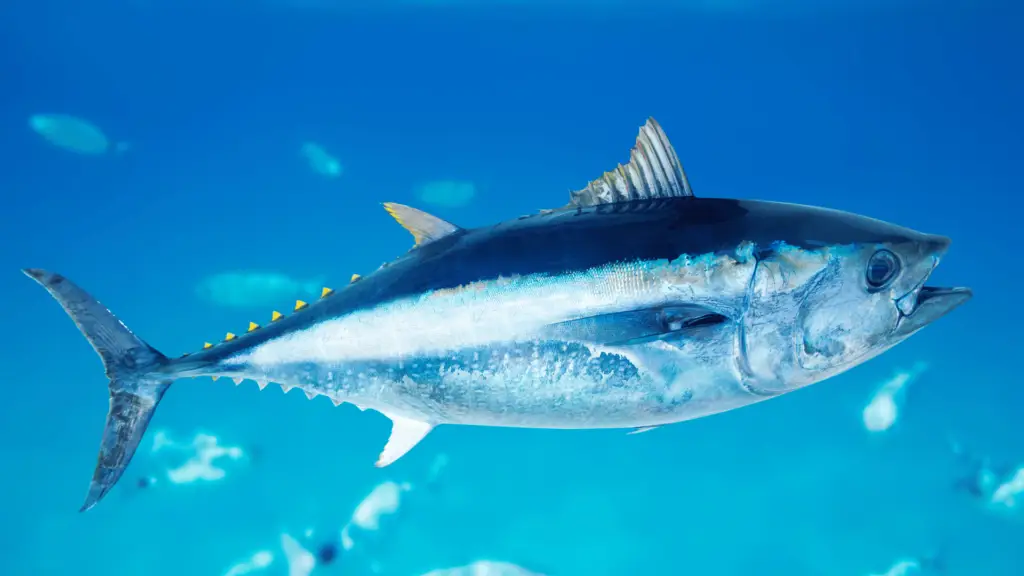
Do Yellowfin Tuna have a strong bite when you hook them?
Yellowfin tuna are known for their speed and challenging battles when hooked, indicating a strong bite.
Does Costa Rica allow you to keep Yellowfin Tuna fish once caught?
Costa Rica has no catch-and-release policy on Yellowfin Tuna in place. Yellowfin tuna can be kept and turned into a delicious sushi or cooked once you arrive at shore.
How to release Yellowfin Tuna fish back into the water safely?
To release Yellowfin Tuna fish back into the water safely, it’s essential not to bring them aboard. Instead, release them while they are still in the water. Utilize tools like a hook-out gun or long nose pliers to carefully remove the hook, ensuring minimal harm to the fish.
Capullo boats in Tamarindo.
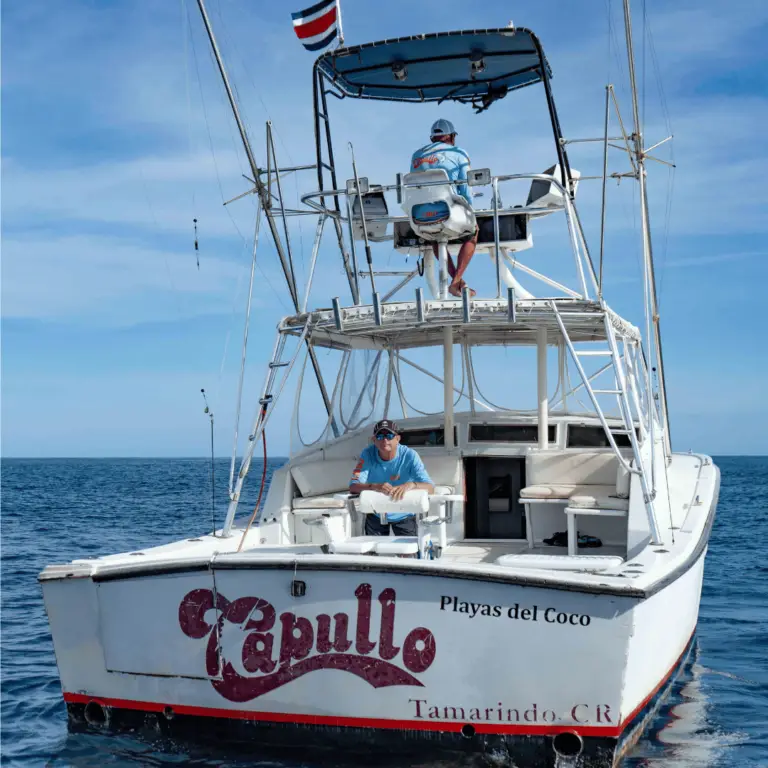
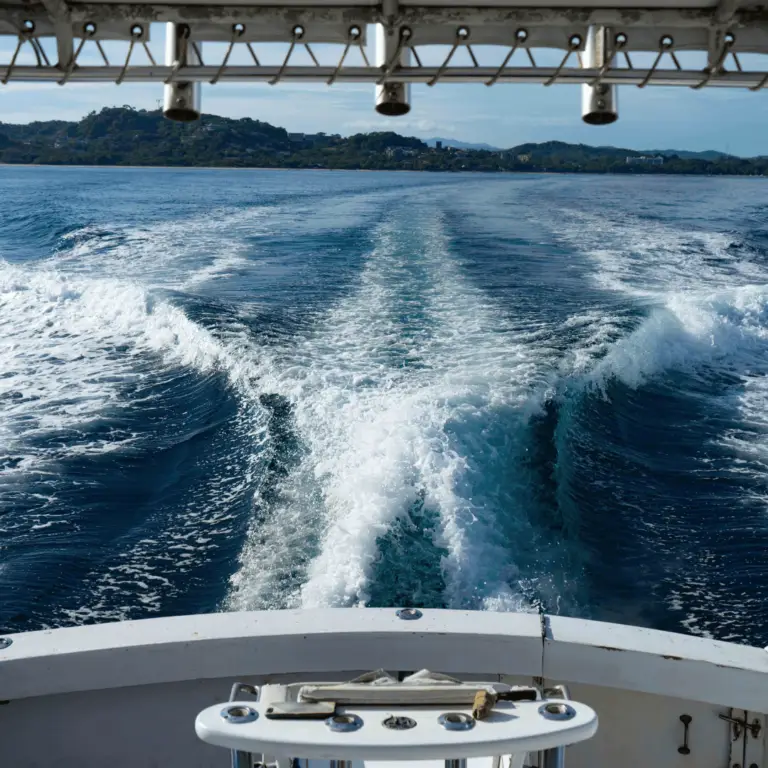
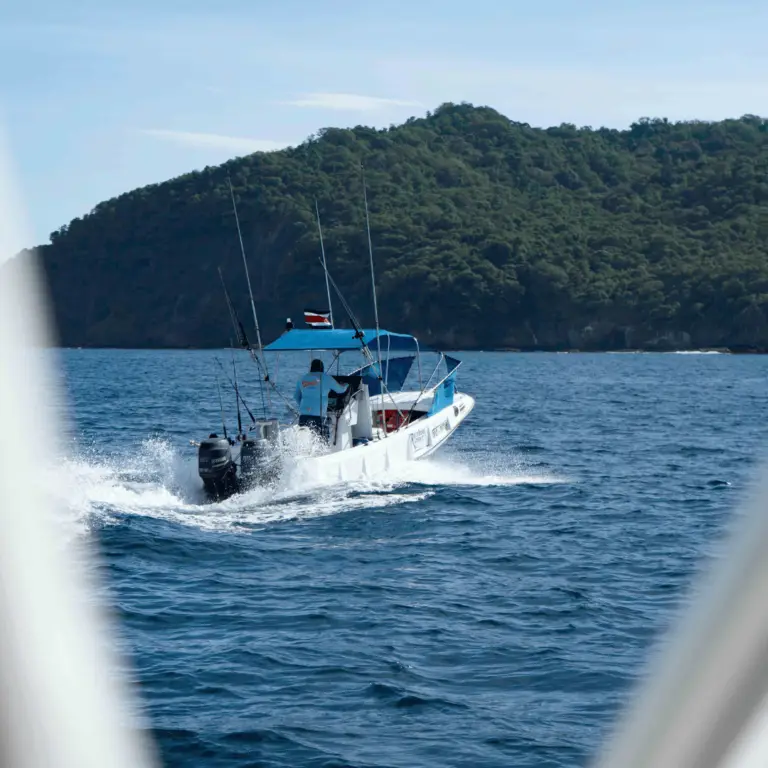
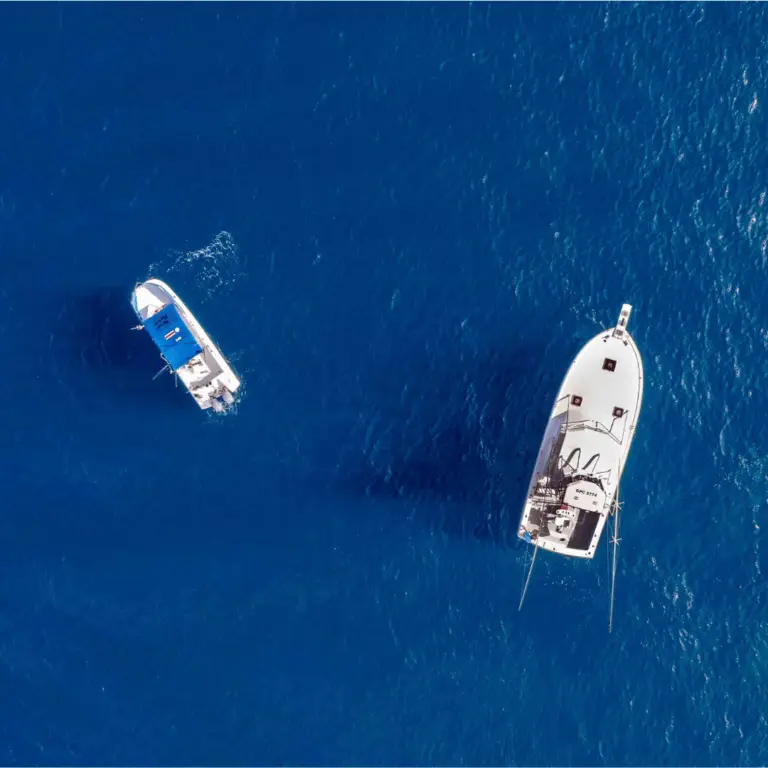
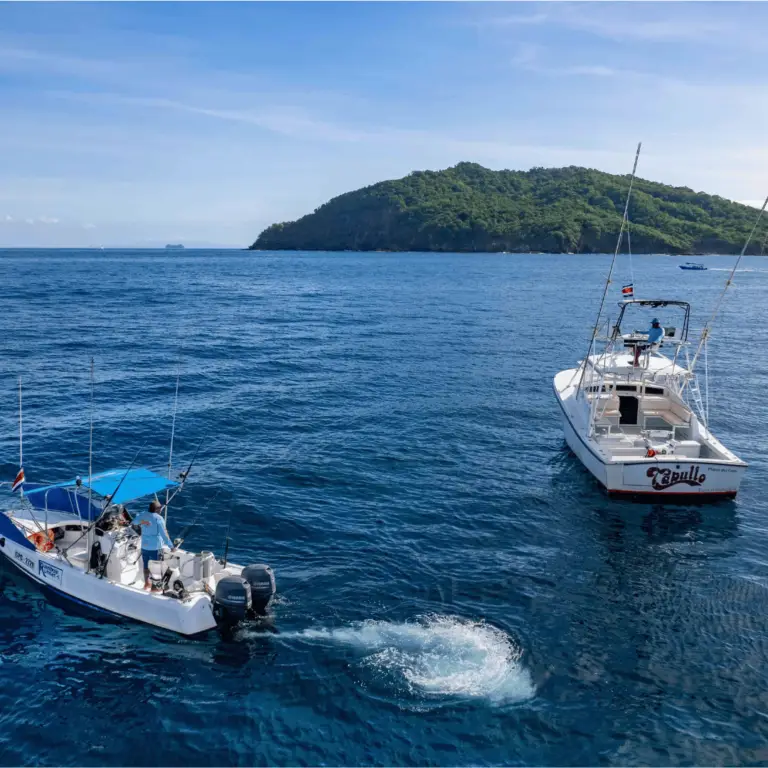
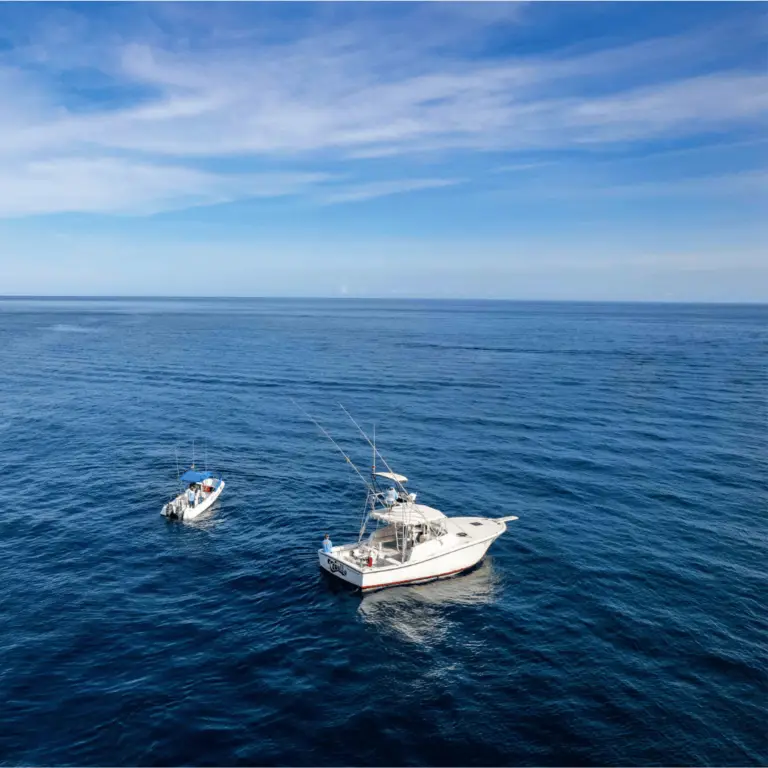
FAQ
How fast does a Yellowfin Tuna fish swim?
Yellowfin tuna can swim at speeds of up to 20.8 m/s (47 mph).
How long do Yellowfin Tuna live for?
The typical lifespan of the Yellowfin Tuna is 5-10 years.
What do Yellowfin Tuna eat?
Yellowfin tuna eat other fish, pelagic crustaceans, and squid.
Where do Yellowfin Tuna fish breed?
Yellowfin Tuna fish breed in tropical waters. They spawn in the open ocean, and the larvae are then carried by currents to coastal areas.
Are Yellowfin Tuna fish endangered?
No, Yellowfin Tuna fish are not endangered. They have recently moved from “Near Threatened” to “Least Concern.”
Do Yellowfin Tuna fish like warm water?
Yellowfin tuna are found in tropical and subtropical oceans, indicating a preference for warmer waters.
Can you eat Yellowfin Tuna after it’s caught in Costa Rica?
Yes, you can turn Yellowfin Tuna directly into sushi, or bring along board, ice it, and grill it. Capullo Sportfishing Charter can also provide you with a reservation to a restaurant where you will be able to eat your catch professionally served.
